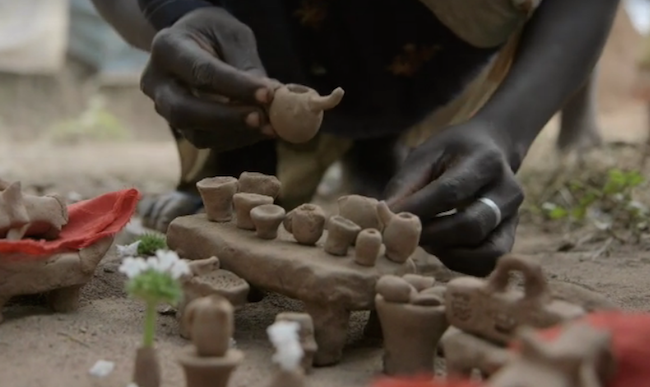In a heartbreaking example of art imitating life, the New York Times captured a fascinating video of Sudanese children creating clay figurines which describe their experience as refugees.
The crew sat down with children at the Yida refugee camp as they were mixing water and soil and shaping the tiny figures with their hands. The forms start out innocently enough; the children show the reporters domestic scenes of tables, kettles and stoves. The miniatures are landscaped with flowers and blades of grass. As they relate more of their experiences about being caught in the fighting between government forces and rebels (such as one 11-year-old girl’s tale of seeing her father shot to death), the crew starts to introduce more sinister forms the children sculpted: crude airplanes, tanks and machine guns, soldiers armed with stubby-looking rocket propelled grenades. Their interview is cut short at one point as an airplane drops bombs within sight of the camp.

It’s evidence of the callous and brutal totality of war; a conflict that consumes everything, including the innocent games of children. The details that brings tears to one’s eye’s are the vases with tiny white flowers, the teapot, the small touches that symbolize the banal everyday comforting rituals of a life they no longer have.
Bill Rodgers is a Contributing Editor at CFile.
Any thoughts about this post? Share yours in the comment box below.


Add your valued opinion to this post.